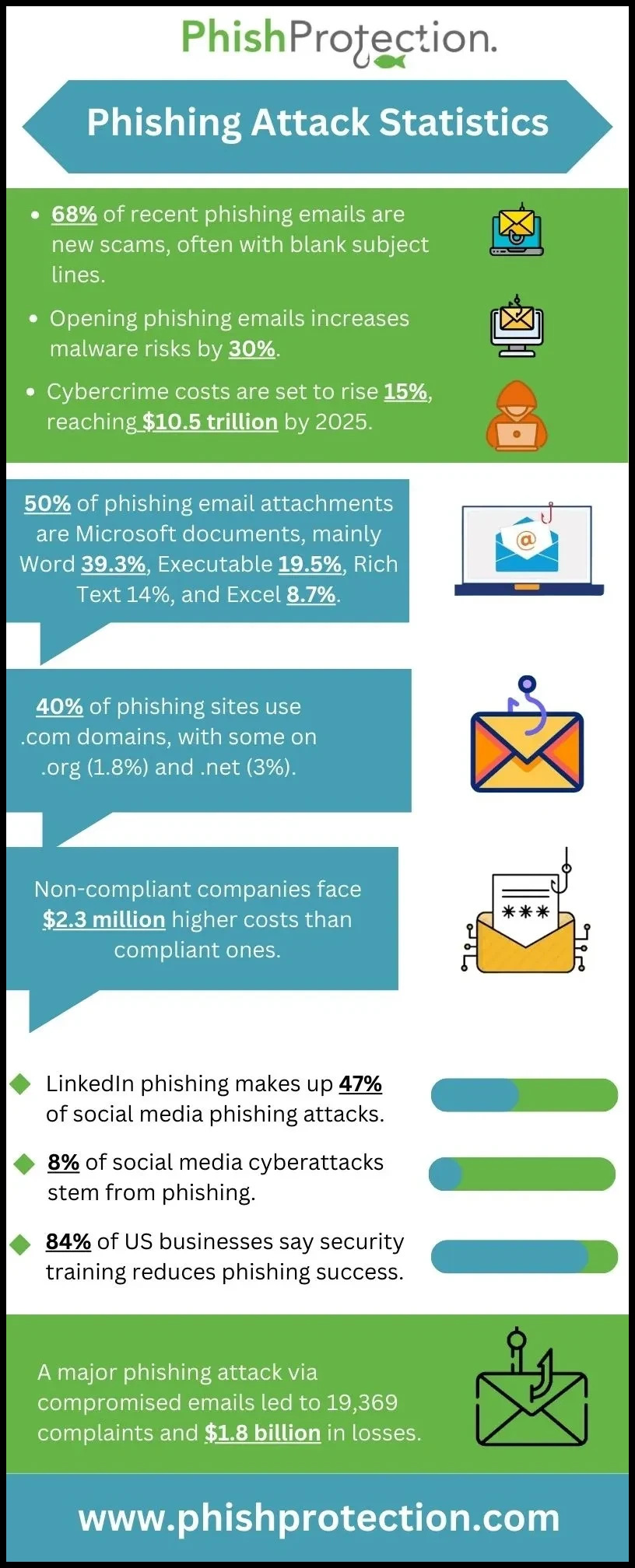Machine learning is one of the critical mechanisms working in tandem with Artificial Intelligence (AI). It is based on algorithms focused on understanding and recognizing patterns from enormous piles of data to create a system that can predict unusual behavior and anomalies. It evolves with time while learning patterns of normal behavior. These characteristics make it helpful in identifying phishing emails, spam, and malware.
Threats Posed By Phishing Attacks
With the ascent of the digital age, phishing attacks have been wreaking havoc across the world. Technology grows and with it the threats from cyber adversaries. With time, phishing and ransomware traps have become an increasing concern. According to information from Verizon’s 2021 Data Breach Investigations Report (DBIR), 36% of all breaches involved phishing, which witnessed an 11% rise in 2020. Meanwhile, the APWG’s 2021 Report on Phishing Activity Trends for Q1 2021 reported a historic high. Even phishing attacks and other malicious activities are sophisticated today in that they use advanced technologies like AI and ML, as is evident from the below graph. And phishing has the highest share in it. In this scenario, phishing mitigation will be far behind if it doesn’t leverage AI and ML capabilities.
A total of 245,771 phishing attacks were recorded just in January 2021, which broke all records. Reports from the third quarter of 2021 reveal transaction requests amounting to $85,000 through business email compromise (BEC) phishing, almost doubling from previous records. Considering that most of these attacks were made possible due to human errors or lack of awareness, security defenders are a crucial precaution that one must take to prevent encountering harmful sites in the first place. Extensive research on Machine Learning is being carried out across the globe to effectively detect and eliminate phishing scams and cyber-attacks in the future.
Fighting Phishing Attacks – A Combined Effort
The days when cyber phishing mitigation used to be effortless are long gone. The modern adversaries use advanced tactics, and their attacks are more realistic and customized. Fake websites and landing pages bear a close resemblance to their genuine counterparts. They make authentic-looking promotions and have a cleverly engineered social media presence. New tools of cyber scamming that possess overwhelming threats to the users and their security emerge every day. Managing such advanced attack scenarios by human capacities alone becomes quite tedious and erroneous. This is where Machine Learning providing adequate anti-phishing solutions becomes relevant. Its regular updating and learning patterns make its countermeasures more effective and quicker.
How Does Machine Learning Detect Phishing Anomalies?
Machine Learning and Artificial Intelligence (AI) make analyzing emails prompt and accurate, thereby avoiding any chance for malicious intervention. The detection works as explained below.
Scrutinizing Message Content
The AI system needs to examine the emails selectively to weed out the malicious elements. Some key features are highlighted during the examination process. The approval of an email depends on the algorithms searching for indications that make an email genuine and different from the typical phishing email examples. They include the presence of a previous conversation, request for data from the recipient, the relation with the subject to the body of the email, etc. A Machine Learning algorithm regularly learns from the data it receives and administers them to increase its accuracy in detection. Hence, the algorithm evolves according to each individual and adapts to their styles.
Understanding The Language of Communication
Today, a fraud that poses a threat to businesses and individuals alike is quite challenging to detect traditionally by an email phishing protection tool. This is because such emails are custom-built to override security measures and target a specific audience. Such specialized offenses require advanced AI and Machine Learning algorithms with the concept of communication to check them. The content of the conversation needs to make sense, be credible, and be without negative keywords. It also helps in cases of impersonation where communication patterns of an individual are analyzed and blocked if changes are identified. This development in the field of Machine Learning is considered to be a breakthrough in preventing fraud.
Mitigating Mobile Phishing Using ML
It is not only on larger systems that ML mitigation is needed for phishing prevention. Since people increasingly use mobile devices for all digital transactions and communications, one must also use Machine Language capabilities to prevent phishing on mobile phones and similar gadgets. Organizations must start leveraging ML tools for phishing prevention. ML algorithms continuously learn from incoming data to predict a phishing attack from the slightest indications.
4 Ways Machine Learning Can Take on Phishing Attacks
The only instance where a Machine Learning algorithm fails is when it stops adapting. Since technical development is updated daily, it is helpful to note the below information to narrow down the knowledge gap and counter the attacks.
- One should enhance cyber security protection in a predictive manner. Instead of analyzing things after they have been executed, it is essential to study the data from endpoint devices and predict any possibility of a threat to thwart any sophisticated breaching attempts.
- The evaluation of the efficacy of a cyber security strategy will be based on an organization’s ability to predict, comply, and deter threats.
- Introduce Machine Learning algorithms on every mobile phone to detect real-time threats, even on offline devices.
- These algorithms can help strengthen the security of mobile phones and double as an employee identification card to eradicate the unnecessary hassle of unsecured passwords.
Final Words
For a Machine Learning model to be at its most efficient form in blocking phishing threats, it needs to be aware of what email, text, social media post, or SMS is a phishing attack. Today, fighting such attacks is possible even through mobile devices. What is needed is an ever-growing platform of data, risk scores, and IT models. Machine Learning algorithms keep learning from a stream of bulk data all the time to detect abnormal patterns. It can know when the nature of a communication from a particular sender changes and instantly verify and block if it is from a fake address. By integrating with the cloud, ML algorithms can perform even better as they can access a vast amount of data, which enables them to learn from other data breaches that have already taken place on other networks to provide better protection against phishing threats.




